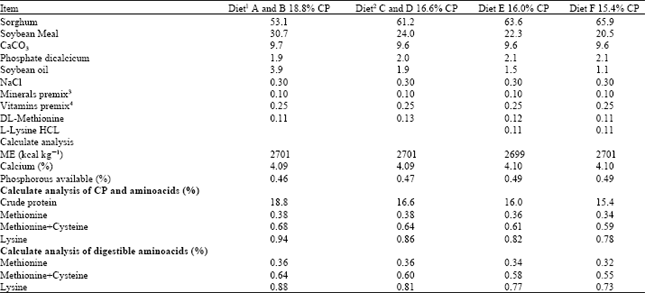Research Article
Effect of Three Protein Levels and an Enzyme Blend on Egg Quality of Laying Hens
Universidad Autonoma de Yucatan, Facultad de Medicina Veterinaria y Zootecnia, km 15.5 carretera Merida-Xmatkuil, apdo, postal 4-116 Itzimna, Mexico
L. Sarmiento-Franco
Universidad Autonoma de Yucatan, Facultad de Medicina Veterinaria y Zootecnia, km 15.5 carretera Merida-Xmatkuil, apdo, postal 4-116 Itzimna, Mexico
J. Segura-Correa
Universidad Autonoma de Yucatan, Facultad de Medicina Veterinaria y Zootecnia, km 15.5 carretera Merida-Xmatkuil, apdo, postal 4-116 Itzimna, Mexico













